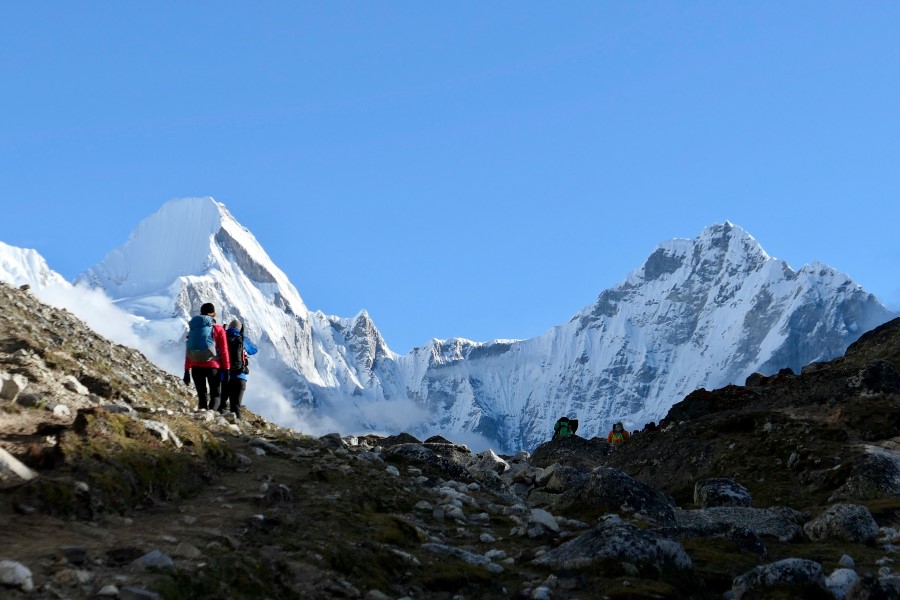Each of 50 Weeks in the City of Science features a text about selected research in a given subject area carried out by scientists from the universities forming the Academic Consortium Katowice City of Science. The texts we publish give insight into the diversity of issues scientists deal with and show the research potential that is dormant in the universities of the consortium.
| Agnieszka Kliks-Pudlik |
The sixth of the 50 Weeks in the City of Science is devoted to mountains. Scientists from the Academy of Physical Education in Katowice argue that mountains are places where you can not only pursue your interests but it is also a place for pioneering research projects e.g. hypoxia (oxygen deficiency).
‘Scientists from our university conduct a large number of research projects on various forms of mountain climbing, including assessing the influence of mountain climbing on the health and physical development of children and young people, as well as the health of adults. During Mountain Week, we will show that high-altitude training can influence sporting performance, as well as be used in new rehabilitation programmes’, says Prof. Zbigniew Waśkiewicz, Mountain Week curator and Head of the Department of Management Theory of the Academy of Physical Education in Katowice.
Photo by Ben Lowe | Unsplash
Novel research on hypoxia
Hypoxia is a condition of insufficient oxygen supply in the body It can be caused by being in high altitudes for too long, where the air pressure is low and there is not enough oxygen. This setting can be achieved in special chambers. The use of hypoxia in sports is commonly applied to improve the capabilities of athletes during training.
This is why the scientists from the Academy of Physical Education in Katowice got interested in this issue. Their research into the effects of high-altitude training on the human body began in 2011 during an expedition to Mount Everest as part of the ‘From the Heap to the Himalayas’ campaign (the expedition, as part of a social action, was initiated by the University of Physical Education in Katowice together with the ‘Ulica’ Children’s Aid Foundation, which cares for young children from the poorest families).
Two years later, in 2013, the research on artificial high-altitude conditions in a hypoxia chamber began. The chamber is a tightly sealed room; it is more difficult to breathe there due to the same pressure and lower oxygen levels.
Pioneering research by the scientists from the Academy of Physical Education contributed to the development of hypoxia use possibilities. Numerous projects (e.g. Prof. Józef Langfort’s) have resulted in the precise identification of human exercise capacity under hypoxia: adaptive changes in the cardiorespiratory system, characterised among other things by the production of vascular endothelial growth factor, reactions in the human antioxidant system have been studied, and an innovative concept for sports training under normobaric hypoxia has been developed.
Research results were implemented in top athlete’s training regimens and published in prestigious journals.
In time, the researchers began to expand on their hypoxia research. Thus, in 2015, Agata Nowak-Lis, PhD, from the Department of Physiotherapy in Internal Diseases started a study on the use of artificial hypoxia conditions in cardiac rehabilitation as part of the second stage of improvement of patients with ischaemic disease without and with a history of myocardial infarction. She has also researched the influence of endurance training conducted in hypoxia conditions on the change in exercise tolerance in patients suffering from ischaemic disease treated with angioplasty.
The scientist is continuing her research with the aim of using interval-based endurance training under artificial normobaric hypoxia as an innovative rehabilitation method for patients with ischaemic disease without and with a history of myocardial infarction. It is an innovative project.
A detailed analysis of the structure of physical activity during mountain trekking in the Sagarmatha National Park in Nepal in the Himalayas, and a comparison of the human body response under normobaric and hypobaric hypoxia were the main objectives of the study completed in 2022 by Katarzyna Jakubik, PhD, from Department of Tourism and Pro-Health Physical Activity.
The results of her study may contribute to a more accurate, practical, and understandable assessment of the incidence of acute mountain sickness (AMS). The scientist noticed that individual differences in the reactions of the cardiovascular system in hypoxia (both while resting and exercising) take higher base values in lab conditions than in natural mountain conditions during trekking.
In turn, the newest research by Michał Krzysztofik, PhD, DSc, Assoc. Prof., from the Department of Sports Theory and Practice will attempt to answer the question of whether the type of hypoxia affects subjective perception of exertion and pain, but first and foremost, check how effective short and long-term training intervention is.
Student research groups also study the issue of hypoxia: awf.katowice.pl/nauka/studencki-ruch-naukowy/natychmiastowy-i-dlugofalowy-wplyw-treningu-oporowego.
The research of scientists from the Academy of Physical Education in Katowice proved that hypoxic training has a positive impact on sporting performance. Examples include medals won at international competitions by biathletes and swimmers working with researchers.
Detailed programme of Mountain Week can be found at us.edu.pl/en/tydzien-gor-w-miescie-nauki-5-11-lutego-2024.






